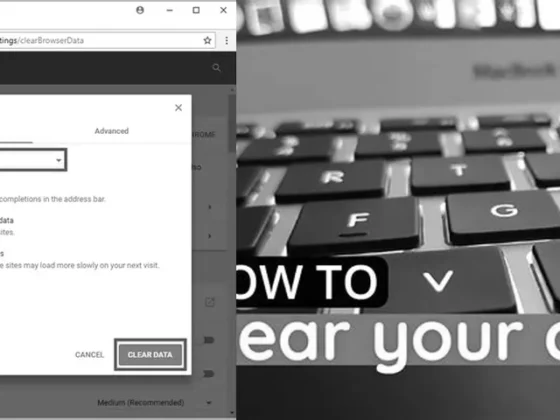Can You Still Use Flash on Chrome? Exploring the Future of Flash Player and Alternative Solutions: Can You Still Use Flash On Chrome? Find Out the Truth Here!
Flash, once a staple of the internet, has now become a relic of the past. With the rise of HTML5 and the increasing security concerns surrounding Flash, major web browsers, including Chrome, have made significant changes. But does that mean you can no longer use Flash on Chrome?
In this blog post, we will delve into the end of the era for Flash Player, explore whether you can still enable Flash on Chrome, and discuss alternative solutions for Flash content. So, if you’re curious about the fate of Flash and what lies ahead for online multimedia, keep reading!
But wait, there’s more! We’ll also answer some common questions and provide you with a glimpse into the future without Flash. So, whether you’re a nostalgic Flash enthusiast or simply curious about the legacy of this once-dominant technology, we’ve got you covered.
Get ready to bid farewell to Flash Player and embark on a journey into the ever-evolving world of online content. Let’s dive in and discover what the future holds for Flash on Chrome!
The End of an Era: Farewell to Flash Player
Adobe has pulled the plug on Flash Player, marking the end of an era for a technology that once powered a vast majority of multimedia content on the web. As of 2021, Adobe has ceased support for the Flash Player plugin, culminating in a gradual phase-out that began years prior. With this change, Flash content, including the rich audio and video elements that once animated the internet, is no longer playable on Chrome or any other browser.
Understanding the Impact on Chrome Users
For those who grew up with the internet, Flash was a staple of online entertainment and education. However, as technology progressed, Flash fell behind due to security vulnerabilities, performance issues, and the advent of superior open standards like HTML5. Recognizing these shifts, tech giants like Google have also discontinued support for Flash. As a result, Chrome users can no longer enjoy Flash-based content directly in their browser.
Can You Enable Flash on Chrome?
Despite nostalgia and the potential need to access legacy Flash content, the straightforward answer is no—enabling Flash on modern versions of Chrome is not an option. This is in line with Adobe’s decision to stop supporting the plugin and browsers’ commitments to enhancing security and user experience. Gone are the days when you could toggle Flash permissions within Chrome’s settings to breathe life into Flash-based websites.
Workarounds for Running Flash in Older Chrome Versions
Before support ended, users could navigate Chrome’s settings to set the permission to “Allow” in the Site Settings for Flash, ensuring the occasional Flash site would still function. This involved clicking “Allow sites to run Flash” and confirming with “Done.” However, this method is only applicable to outdated versions of Chrome, which themselves pose significant security risks and are not recommended for use.
Adobe Flash Player’s Final Curtain Call
Adobe Flash Player’s discontinuation on December 31, 2020, was a significant milestone, with the download page for the plugin being removed shortly after. This marked the definitive conclusion of Flash Player’s availability and usability on any browser, including Chrome. The year 2023 sees us in a world where Flash is but a memory, with no viable means to run it within the Chrome environment or elsewhere with official support.
Alternative Solutions for Flash Content
With the inability to use Flash on Chrome, users and creators have turned to various alternatives. Converting Flash to HTML5 has been a popular path, preserving the original intent and interactivity of Flash content while embracing modern web standards. Other methods include using software that emulates Flash or converting Flash animations to video formats, although these solutions often come with caveats and limitations.
Preserving Flash-Based Projects
For educational and historical purposes, there are ongoing efforts to archive and preserve Flash-based projects. Initiatives like the Internet Archive use emulation to allow users to experience Flash content without the need for the original plugin. However, these are exceptions rather than the rule and are not integrated into Chrome or other mainstream browsers.
Looking to the Future Without Flash
The internet is an ever-evolving landscape, and the retirement of Adobe Flash Player is a testament to this constant change. As Chrome and other browsers continue to innovate and prioritize security, performance, and open standards, the reliance on plugins like Flash diminishes. The focus now is on creating content that is accessible, efficient, and future-proof, leveraging technologies that are built into browsers natively.
Embracing New Web Technologies
Developers and content creators are now using robust alternatives like WebGL for 3D graphics, WebAssembly for high-performance applications, and various JavaScript frameworks to build dynamic and interactive web experiences. These technologies are secure, fast, and mobile-friendly, ensuring that the web remains a vibrant and engaging platform for years to come.
Conclusion: The Legacy of Flash
Adobe Flash Player’s journey has ended, and with it, an iconic chapter in the story of the web. While it’s no longer possible to use Flash on Chrome, the legacy of Flash lives on through the content it inspired and the lessons learned from its limitations. As we move forward, the focus is on creating a more secure, accessible, and interactive web—a vision that Flash, in its prime, helped us to imagine.
In the absence of Flash, we are reminded of the importance of embracing change and innovation. Chrome’s evolution away from Flash reflects a broader trend in technology: a move towards a seamless, integrated user experience that is both powerful and secure. As we bid farewell to Flash, let’s continue to push the boundaries of what’s possible on the web, honoring the pioneering spirit that Flash represented.
FAQ & Related Questions about Using Flash on Chrome
Q: Can I still use Flash on Chrome?
A: No, as of 2021, Adobe has ended support for the Flash Player plugin, and Flash content will no longer play back in any version of Chrome.
Q: How can I enable Flash on Chrome?
A: You can enable Flash on Chrome by going to the settings and enabling the switch for “Ask First”. If you have an older version of Chrome, you may need to click the option “Allow sites to run Flash” and click “Done”. After restarting Chrome, you should be able to use Flash.
Q: Why did Chrome disable Flash?
A: Chrome disabled Flash by default as a way to protect computers from viruses that run through Flash. However, you can still set Chrome to ask you whether you want to run Flash when encountering a page that has it.
Q: Can I still download Flash Player?
A: No, Adobe has stopped supporting Flash Player as of December 31, 2020. It is no longer available for download.
Q: Why did Chrome stop using Flash?
A: Chrome and other web browsers have been phasing out support for Flash due to security vulnerabilities and performance issues. The use of Flash has declined significantly over the years, and the transition to modern web standards is encouraged.


